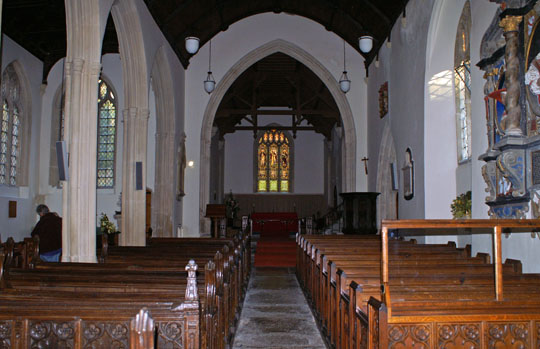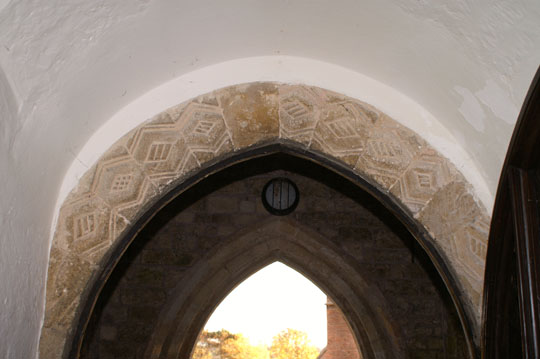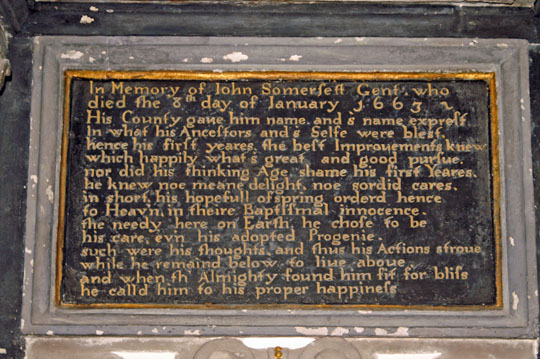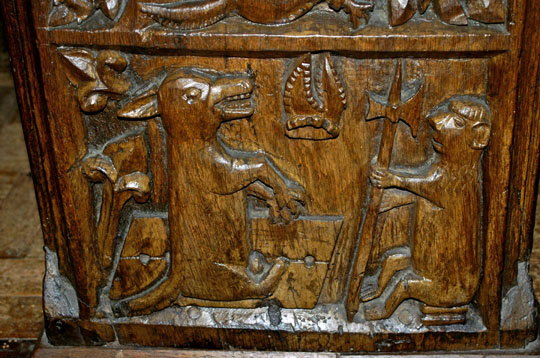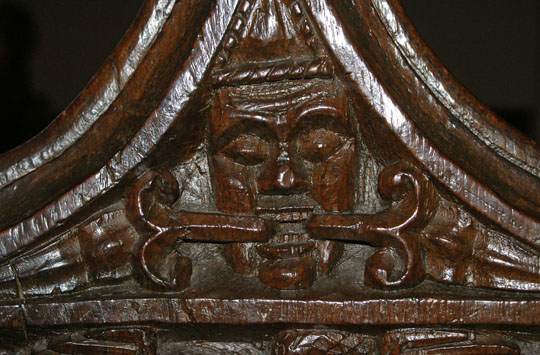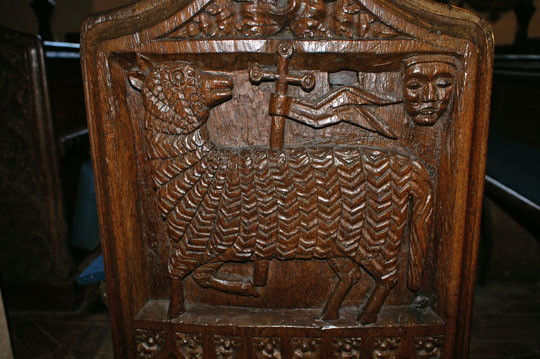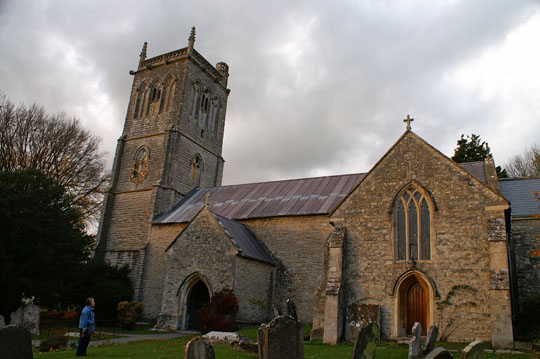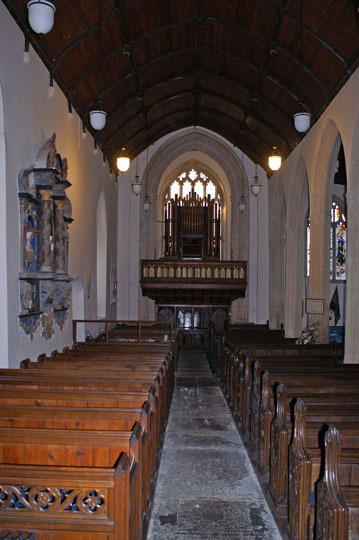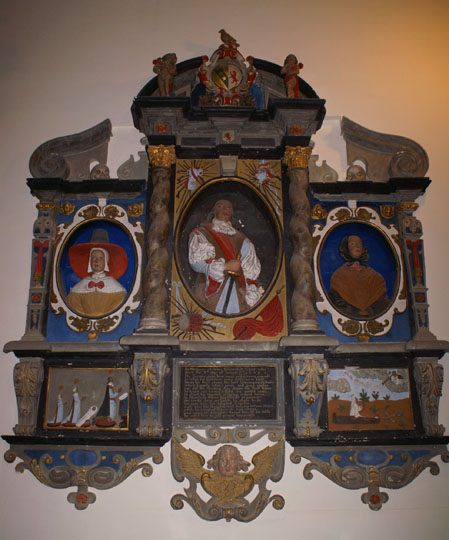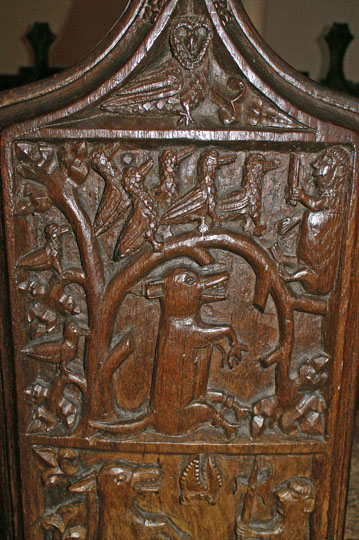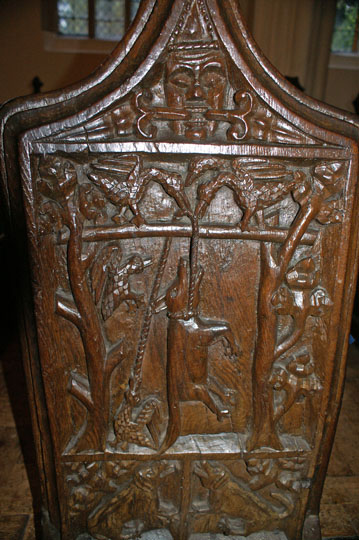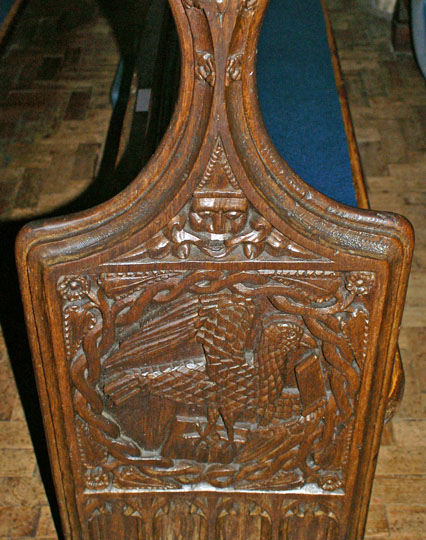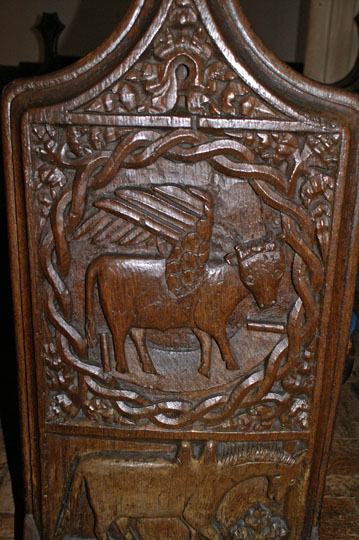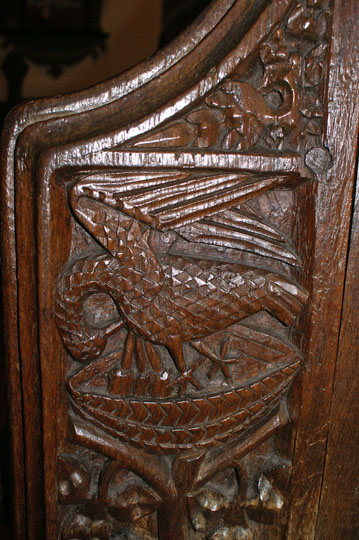|
Brent Knoll is just that: a conspicuous hill about 450 ft high next to the busy A38 road near Burnham-on-Sea and it has a village of the same name. Mounds were thought to be potential haunts of the Devil, hence the dedication to St Michael - the archangel. The Romans had a fort here, and the Anglo-Saxons a lookout post. On its slopes in AD875 they successfully saw off the Danes in a pitched battle.
There was probably a church on this site in c7 when the manor of South Brent was given to the Abbey of Glastonbury, but what we see today is unexceptional perpendicular. There is zig zag moulding over the west door that has clearly been recycled from an earlier Norman building. The rather basic, but nevertheless informative, church guide points out that St Michael was a favourite dedication of the Norman conquerors.
The south side of the church from the west end as far as the north transept is all that remains of the early c14 structure. The north aisle was built in the late c15 and has a fine carved roof alive with angels and bosses. The chancel is Victorian. The tower is late c14. All in all, then, there is little to detain us architecturally.
The bench ends from the c14, however, are another story. Here we see mediaeval carving at its most mischievous. To be sure, neither the humorous scenes portrayed nor the more spiritual ones are of great artistic merit, but they
|
